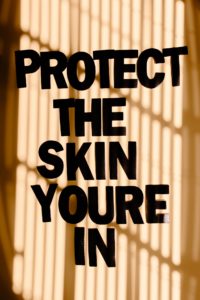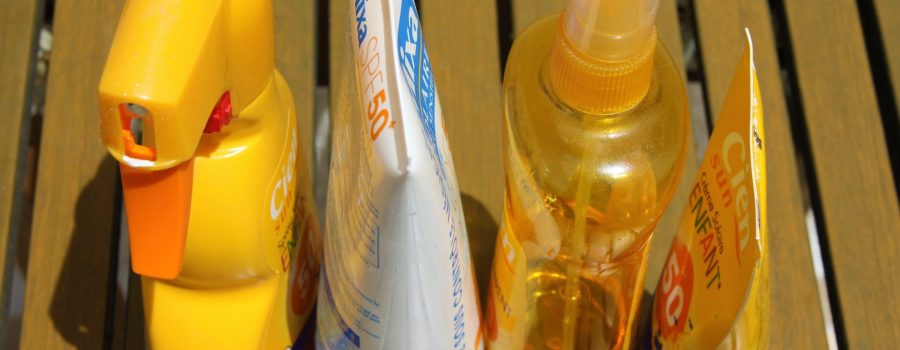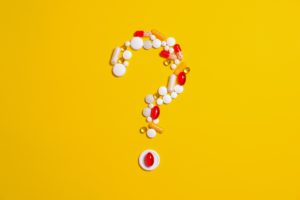Useful Tips About Sunscreens
After learning about the benzene in popular brands of sunscreens, I decided to dedicate a different post to this topic, with some practical tips.
KEY TAKEWAYS
- protection is needed against both UVA and UVB rays (powerful between 10 AM and 4 PM)
- beside sun creams, sun protective clothing is very useful, if not more
- SPF refers to UVB protection only (SPFs 30 to 50 block 97 to 98% of UVB)
- SPFs over 50 only offers minimally increased protection (99%)
- most chemical UV filters are substances that get absorbed in our body
- SPFs over 50 contain higher amounts of the toxic chemical filters
- higher than 50 SPFs give a false sense of safety and more likelihood of sun damage
- the mineral sunscreens available in the US are more effective, providing decent UVA and UVB protection
- chemical sunscreen filters get degraded in the sun, need to be reapplied every 1-2 hrs
- sunscreen sprays do not offer good UV protection
- nanoparticles are usually present in sunscreen sprays of mineral or mixed ingredients sunscreens.
- these particles can be inhaled and cause lung toxicity, even lung cancer. The same is true for the powder makeup with SPF
- non-nano has to be specified on the product label
- sunscreens mixed with bug repellants can carry more toxicity, they are best used separately
Ultraviolet radiation (UVA and UVB rays)
First I wanted to refresh some basics. We know prolonged sun exposure can be harmful because of the UV radiation, (UVA and UVB).
UVA is the most 95% of the UV radiation that reaches us, it penetrates deeply into the skin layers producing free-radicals that can damage our DNA damage, causing skin aging, and contributing to skin cancers (melanoma). It penetrates windows and clouds.
UVB is less than 5% of the UV that reaches us, penetrates only the superficial skin layers and is responsible for sunburn and contributes to non-melanoma skin cancers.
The ground around us, the pavement, sand, and water reflect UV light too. Sea foam reflects about 25%, while snow it’s the worst in this regard, reflecting close to 90%.
SPF meaning
The label for sunscreens comes with an SPF number that only estimates the UVB protection (for sunburns). Very few labels talk about UVA protection.
The SPF is determined in a lab and minor differences in the way the test is conducted can cause significant differences in the results. The outdoor conditions are quite different than what happens in a the lab.
The SPF usually overestimates the protection, and in different labs for the very same product the SPF result can vary from 30 to 70. (According to EWG, Proctor and Gamble conducted this kind of testing on a SPF 100 competitor’s product). That’s why we can’t think of the SPF as an absolute indicator we need to follow.
Over a number of years, shelves are full of products with SPFs as high as 100. Do these offer more protection? Unfortunately they don’t. If we illustrate this with numbers, properly applied SPF 30 blocks 97% of the UVB radiation, SPF 50 sunscreen blocks 98 percent, and SPF 100 blocks 99 percent of the UVB rays.
Chemical UV filters

The main, common active ingredients you’ll see on labels are:
- oxybenzone
- octinoxate
- homosalate
- octocrylene
- octisalate
- avobenzone
These penetrate the skin and were found in urine, breast milk, and more recently in blood—for weeks after being used. They have hormone disrupting effects, especially for the sex hormones but thyroid hormones too.
Of all, avobenzene seems to have the least hormonal disrupting effects and is the only chemical filter that offers UVA protection. The problem is that UV rays can break down avobenzone after 30 min. That’s why is mixed with octocrylene, homosalate, or octisalate as stabilizers to slow down the process.
Other sunscreen ingredients can also break down by the UV rays. That’s another reason to reapply them, beside the the fact that they can rub off or wash off.
SPFs higher than 50 give users a false sense of safety, people tend to spend more time in the sun, get burned, and get more long-term skin damage. Another reason for not choosing products with SPF higher than 50: They need even higher concentrations of these hormone disrupting chemicals and they still need to be reapplied with the same frequency.
Allergic skin reactions can be triggered by any of these and/or the other inactive ingredients used as preservatives and fragrance. Parabens used as preservatives (among others), and phthalates (hidden under “fragrance”), also have estrogens-like effects in our body.
Mineral UV filters
So far, all these ingredients offer just UVB protection. How about the UVA?
Zinc oxide is one of the best UVA filters available in the US, and titanium dioxide is also effective. When properly applied, they both provide the desired protection from free radical formation and the subsequent skin damage. Many people don’t like to apply them as much as they should, because of the visible coating that remains on the skin.
Nanoparticles in sunscreen sprays
The clear versions of mineral sunscreens don’t cause this problem, but they’re made with very, very tiny (nanoparticles) that can possibly penetrate through the skin. The nanoparticles are also used in sunscreen sprays and powder makeup (with sun protection). The sprays don’t offer as good UV protection, too thin a layer is usually being applied.
These nanoparticles of titanium dioxide and zinc oxide from sprays and powder makeup can be inhaled when applied. When we breathe them in, they reach the lungs and can have toxic effects because our lungs cannot clear these particles. Inhaled titanium dioxide nanoparticles can have carcinogenic effects too.
The tip here is to use them as creams or lotions, not sprays. The other conclusion is that powder makeup with nanoparticles is best avoided for the same risk of inhalation. Sprays should not be used over the face or on windy days (more risk of inhalation), or close to an open fire (the alcohol in them can cause flames and severe burning).
Other ingredients in sunscreens
Vitamin A derivatives (retinyl palmitate is an example) should not be used in the sun products, as it’s not a stable component. Products that mix sunscreens and bug repellants should be avoided. Too many chemicals together and you may not need as much repellant as sun protection.They are usually needed at different times anyway.
Adding antioxidants, like green tea extract for instance, to sun-care products can be helpful. They minimize free-radicals formation due to UV exposure. This is more pronounced with UVA rays. Chemical preservatives and synthetic fragrances can often cause allergic reactions. I’ve seen really extensive blisters and redness, likely due to the reaction causes by the sunscreens breaking down after sun exposure.
Ethylene oxide derivatives
I watch out for a many ingredients beside the active ones and now I’ll explain why. The many creams and lotions have derivatives of a human carcinogen—ethylene oxide.
Some of the names you come across are polyethylene glycols (PEGs) with numerous derivatives (ending in eth—like laureth), polysorbates, trolamine (or triethanolamine), phenoxyethanol, or poloxamer. These are not just in sunscreens, but most of the other conventional cosmetics. Sometimes you’ll see names like PEG-8 avocado oil, but don’t get tricked, it’s still a chemical compound.
I use non-nano mineral sunscreens only and never as sprays. Badger remains my favorite brand, but California Baby it’s fine too. Babo Botanical and Sun Bum facial sticks are easy to apply and lack the components I highlighted above, although some creams may have phenoxyethanol.
Sun protective clothes
I happily wear sun protective clothing anytime it’s suitable and I like the cottony feel. Their UPF factor is measured differently than the SPF. An UPF of 50 means that only 1/50 of the UV rays (both A and B) are getting through. In my experience, they also limit the skin from getting too hot when walking on a sunny day, they really are very comfortable.
Hats and sunglasses are a must as well. Of course, the walking or hiking “attire” is different from the rash guard items needed for the beach or water activities.




